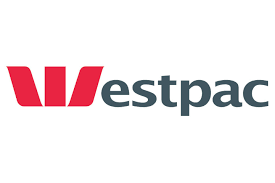Home > Bank Accounts > How Many Bank Accounts Should I Have?
Author
Savvy Editorial TeamFact checked
Finding the best bank account can save you hundreds on fees and connect you with the very latest in smart banking technology. Compare bank accounts from a wide variety of providers with Savvy to find the very best offers available on the market right now.

|
|||||||||||||||||||
|---|---|---|---|---|---|---|---|---|---|---|---|---|---|---|---|---|---|---|---|
|
|||||||||||||||||||
Use invite code SAVVY10 for $10 upon successful sign-up. (Refer to offer T&Cs on Up website)More details |
|||||||||||||||||||
 ING Orange Everyday
ING Orange Everyday |
|||||||||||||||||||
|---|---|---|---|---|---|---|---|---|---|---|---|---|---|---|---|---|---|---|---|
|
|||||||||||||||||||
Rebates on ATM fees anywhere in Oz. No ING international transaction fees. Zero monthly fees.More details |
|||||||||||||||||||

|
|||||||||||||||||||
|---|---|---|---|---|---|---|---|---|---|---|---|---|---|---|---|---|---|---|---|
|
|||||||||||||||||||
No monthly account fees ever, with no conditions. Free use at over 7,000 ATMs around Australia. No overdrawn fees if you happen to go over your account balance. Open an account in less than 7 minutes.More details |
|||||||||||||||||||

|
|||||||||||||||||||
|---|---|---|---|---|---|---|---|---|---|---|---|---|---|---|---|---|---|---|---|
|
|||||||||||||||||||
Get $40 with a new Complete Freedom everyday bank account.More details |
|||||||||||||||||||
 Westpac Choice
Westpac Choice |
|||||||||||||||||||
|---|---|---|---|---|---|---|---|---|---|---|---|---|---|---|---|---|---|---|---|
|
|||||||||||||||||||
Westpac Choice for easy day-to-day bankingMore details |
|||||||||||||||||||
Disclaimer: Savvy is not advising or recommending any particular product to you. We provide general information on products for the purposes of comparison, but your personal situation or goals are not considered here. Although we try to make our comparisons as thorough as possible, we do not have information on all products on the market on our site.
You should always consult a given offer's PDS or further documentation in the process of deciding on which loan to choose, as well as seeking independent, professional advice. If you decide to apply with one of the lenders listed above via our website, you will not be dealing with Savvy; any applications or enquiries will be conducted directly with the lender offering that product.
‘How many bank accounts should I have?’ is a question commonly heard at bank branches around Australia. However, it’s not a simple question to answer, as plenty depends on your personal circumstances and how you earn and spend money. While it’s necessary to have more than one bank account, there’s little reason to have more than you need to organise your finances, as fees can make a significant dent in your savings. Find out more about how to organise your household finances so everything flows smoothly with Savvy – then compare accounts to make sure you’re getting the best deal from your bank accounts.
There’s no magic number of bank accounts which will suit all people in all situations. How many accounts you should have will largely depend on your household structure: whether you’re part of a couple or family, a household of sharing flatmates or a single person. Broad opinion is divided between those who say ‘keep it simple’ and those who feel that multiple bank accounts for different purposes help with budgeting.
All households share common banking needs, such as the need to have somewhere to deposit wages, a method to pay the rent or mortgage, a credit or debit card to shop and pay bills online, and then somewhere to stash your savings.
Savvy can help you find the best bank account by providing simple and easy-to-understand comparison information to help you make the best choice of bank account for your needs. Some of the most common ways to arrange and establish your bank accounts are:
1. The traditional ‘four-way’ method of budgeting
The most traditional way of organising household finance in Australia is based around a couple with children, with each parent working. This method sees Mum and Dad having a personal transaction account each, and then sharing a joint transaction account and a joint savings account as a couple.
This means there are four accounts for the household. Each person’s salary is paid into their personal accounts. Both parents transfer an agreed amount or percentage of their wages into their joint transaction account to pay all household bills, and a portion to their joint savings account to save up for shared goals, such as a new car or holidays. Any remaining money is personal discretionary spending money.
A slight variation to this ‘traditional’ household budgeting method adds two more accounts: a home loan offset account and an emergency fund, which brings the total to six. Each parent has their wages paid into the mortgage offset account and transfers money to the household everyday account to pay bills. They have their own accounts for discretionary spending and also transfer a set amount into the joint savings account and emergency fund, which isn’t touched unless there’s a dire emergency.
A further consideration is reducing the interest you pay on your home loan if you have a mortgage. A mortgage offset account is a bank account linked to your home loan which you can deposit savings into. It doesn’t pay interest, but every dollar in the account offsets the amount you owe on your mortgage, so you’ll pay far less overall. This can save you thousands of dollars on the cost of your mortgage, if not more.
Life has a way of pitching curveballs at us. Natural disasters or unexpected medical diagnoses can rapidly change the course of our lives when we least expect it. For this reason, most financial planners recommended that everyone has an ‘emergency fund.’ This fund should be in a high-interest savings account earning interest, and should not be touched except in a genuine and dire emergency.
Ideally, a couple with children should put away the equivalent of six months of household income in their emergency fund. A single person should have at least three months’ wages put aside. With the number of bushfires, floods, droughts and other natural disasters that Australia has seen in the past decade, many Australians have been relieved to have a fall-back fund to help them through tough times.
2. The ‘multiple accounts for different purposes’ approach
A more complex approach to household budgeting is to have multiple accounts for multiple purposes. This method sees savers having a personal account and one household transaction account for all outgoings (including the rent or mortgage, utility bills, phones, internet and grocery shopping). They have another transaction account for their joint household income if they’re part of a couple, into which all wages are paid.
From this ‘income’ account, funds are automatically transferred into other accounts to pay bills, boost savings or any other reason. In addition to their ‘incoming’ and ‘outgoing’ accounts, they may have a mortgage offset account which is linked to their home loan, one or more main savings accounts and an emergency account (which isn’t used unless there’s an emergency). This could result in the household having at least eight accounts, if not more. These ‘active budget managers’ may have automatic transfers set up between their various accounts to ensure that money flows to where it’s needed each payday.
Find out which type of bank account is best for your needs by having a close look at Savvy’s account comparison information. You can also work out your household budget with Savvy’s free detailed budget planner calculator.
A compromise between the ‘keep it simple’ camp and the ‘multiple bank account’ camp can be achieved through a relatively new banking feature which is becoming more common in Australia: split bank accounts. These are a handy modern solution to the problem of how many bank accounts to have – and involves having one transaction account and one savings account, but splitting them into sub-accounts.
Some banks are now offering the opportunity to split a single account into sub-accounts for no additional fees. It’s possible to name each sub-account according to its intended purpose, such as ‘utility bills’ and ‘rent,’ or ‘new car savings’ and ‘holidays.’ Money can be transferred back and forward between the sub-accounts either automatically or through a banking app. Some banks allow you to have up to 12 sub-accounts, which act like different drawers in the one main filing cabinet.
All money in the named sub-accounts is pooled when it comes to reaching deposit or savings targets. Such split accounts could be the way of the future and may offer an ideal compromise suitable for all household budgeting systems.
The best everyday accounts in Australia have no account fees and no transaction fees. You shouldn’t be charged for using ATMs and there shouldn’t be any additional fees to have several debit cards attached to the one account. Choose an everyday account which has a mobile app compatible with your phone and smart watch so you can always have access to your funds and pay bills on the run if you’re short of time.
Some banks use Apple Pay, Samsung Pay and Google Pay, whilst others only allow one or two of these payment options, so be sure to select an account which works with your phone and digital wallet. As transaction accounts don’t usually accrue interest, look for an account with the most compatibility, the highest number of useful features and the lowest fees.
No – as of early 2022, only a limited number of banks offer split bank accounts which allow you to create sub-accounts. These are mainly the newer online banks. You can use Savvy’s free comparison service to find and compare bank accounts which do allow you to split your account.
Yes – most financial specialists agree that as soon as income is received, it should be transferred and allocated for various purposes. The most important payment is to ensure the mortgage or rent is paid. Next comes utility bills, followed by food. Whatever is left over after all these essentials have been accounted for can be divided between savings and discretionary spending money.
No – there's no need to have all your bank accounts in the same name. You may wish to have accounts in your name alone, some with your spouse or partner, and others as joint accounts with your children. However, you should always use your formal name when opening a bank account, which is the one that appears on your passport or birth certificate, and not nicknames or shortened forms of your name. A married woman is permitted to use her maiden name in addition to her married name to open a bank account in Australia.
All authorised deposit-taking institutions (ADIs) in Australia are covered by the Australian Government’s Financial Claims Scheme. This guarantees savings placed with an ADI up to $250,000 per person per ADI in the unlikely event the financial institution should go bankrupt. Be aware that many of Australia’s banks and online financial institutions are linked, operating under the one ADI licence as a result. For example, Westpac also owns St George Bank, BankSA, Bank of Melbourne and RAMS. If you had an account with each of the institutions owned by one bank, you’d only be covered by the one ADI guarantee of $250,000.
It may not cost you anything to set up a new bank account, as so many banks and financial institutions are offering no setup fees, cashback offers and other incentives to tempt new customers. Fee-free accounts, no transaction limits and free ATM use are all also quite common in bank accounts now.
When someone dies, if the account is jointly owned and is a ‘one or either to sign’ joint account, the second account holder can carry on using the account as normal after their partner has died. If the bank account is in a single name, it’s frozen to protect the funds until the rightful owner of the account is determined by the executor of the deceased estate.
Yes – many banks do offer fee waivers or reductions if more than one type of bank account is packaged together with the same bank. For example, if you open a new transaction account and have a linked credit card, you may be offered no interest on the balance transfer on the credit card for 12 months as an incentive.
Quantum Savvy Pty Ltd (ABN 78 660 493 194) trades as Savvy and operates as an Authorised Credit Representative 541339 of Australian Credit Licence 414426 (AFAS Group Pty Ltd, ABN 12 134 138 686). We are one of Australia’s leading financial comparison sites and have been helping Australians make savvy decisions when it comes to their money for over a decade.
We’re partnered with lenders, insurers and other financial institutions who compensate us for business initiated through our website. We earn a commission each time a customer chooses or buys a product advertised on our site, which you can find out more about here, as well as in our credit guide for asset finance. It’s also crucial to read the terms and conditions, Product Disclosure Statement (PDS) or credit guide of our partners before signing up for your chosen product. However, the compensation we receive doesn’t impact the content written and published on our website, as our writing team exercises full editorial independence.
For more information about us and how we conduct our business, you can read our privacy policy and terms of use.
© Copyright 2024 Quantum Savvy Pty Ltd T/as Savvy. All Rights Reserved.
© Copyright 2024 Quantum Savvy Pty Ltd T/as Savvy. All Rights Reserved.
Quantum Savvy Pty Ltd (ABN 78 660 493 194) trades as Savvy and operates as an Authorised Credit Representative 541339 of Australian Credit Licence 414426 (AFAS Group Pty Ltd, ABN 12 134 138 686). We are one of Australia’s leading financial comparison sites and have been helping Australians make savvy decisions when it comes to their money for over a decade.
We’re partnered with lenders, insurers and other financial institutions who compensate us for business initiated through our website. We earn a commission each time a customer chooses or buys a product advertised on our site, which you can find out more about here, as well as in our credit guide for asset finance. It’s also crucial to read the terms and conditions, Product Disclosure Statement (PDS) or credit guide of our partners before signing up for your chosen product. However, the compensation we receive doesn’t impact the content written and published on our website, as our writing team exercises full editorial independence.
For more information about us and how we conduct our business, you can read our privacy policy and terms of use.
Our consultant will get in touch with you shortly to discuss your finance options.
